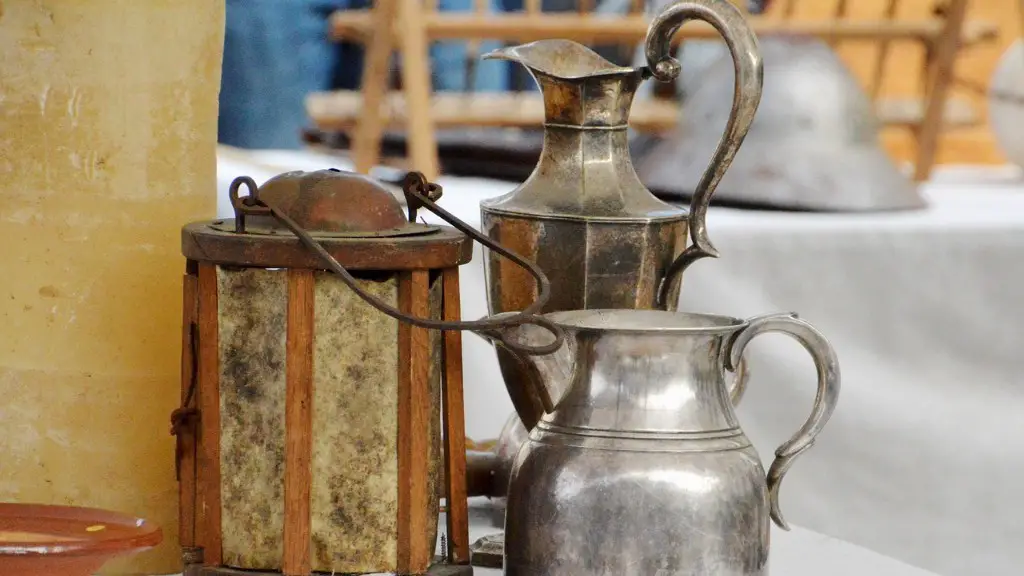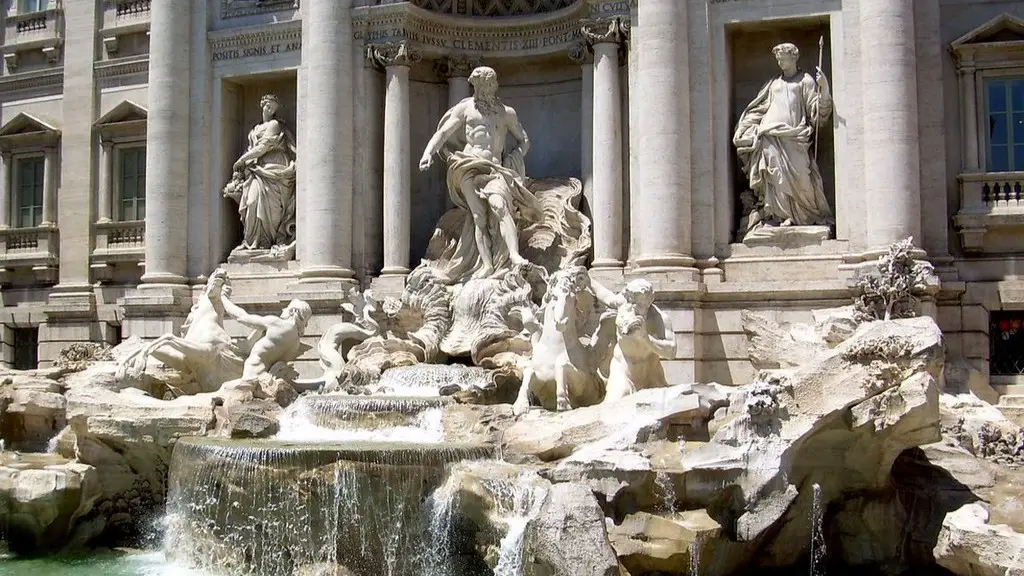Limestone has played an incredibly important role in the history of Ancient Rome. It is the stone that formed the basis of the city, the foundation of their empire and the backbone of their many developments. It is the reason that Rome had such an impressive legacy, and it is the reason that their many accomplishments still stand today.
Since ancient times, limestone has been used extensively in construction in the Mediterranean region. This is due to its availability, its strength and its durability. In Rome, it was used as the primary material of construction, as well as other purposes such as carving sculptures and decorating floors and walls.
The most well known example of this use of limestone is the Colosseum in Rome. This iconic building is made of limestone and has withstood more than two thousand years of weather and wear and tear. Other notable examples of limestone use in Ancient Rome include the Pantheon, the Flavian Amphitheatre, the Roman Forum and the Circus Maximus.
Limestone was also used for decorative purposes by the ancient Romans. They used it to make sculptures, mosaics and other artworks, as well as for decorating the exterior of buildings. It was also used in the construction of pools and docks, as well as the erection of the aqueducts that supplied Rome with its water supply.
Not only was it used in construction and decoration, but limestone was also a key material in Ancient Roman cement. Roman cement was made of limestone and sand, and was a crucial component in many of Rome’s advanced construction techniques. It had the ability to set quickly and form a strong and durable bond between the stones of their buildings.
It is clear that limestone was a vital material to the Ancient Romans. Without it, Rome would not have been the impressive city that it was. This is why it is so important to understand and appreciate its importance in the development of Rome, as it is a key part of their legacy.
Limestone in Religious Settings
Limestone was also used for religious and spiritual purposes by the Ancient Romans. This can be seen in the many temples and other places of worship throughout Rome. The Pantheon, in particular, is constructed from and decorated with limestone. This is significant, as it is a representation of the importance and power of the gods in Ancient Rome.
The use of limestone in religious settings can also be seen in other places such as the Circus Maximus, where the games dedicated to the gods took place. It was also used extensively in the catacombs of Rome, where Christian burials were held. This shows the importance of limestone in the lives of the Ancient Romans, both in terms of their construction techniques and their spiritual beliefs.
In addition to its use in religious settings, limestone was also used in burial sites. It was believed to protect the deceased and guard against evil spirits, so it was often used to construct tombs. This is significant, as it shows that limestone was seen as a powerful material by the Ancient Romans.
It is clear that limestone had an important role to play in Ancient Rome, both in terms of construction and in terms of spiritual beliefs. Its use in religious settings is a testament to the power and importance of this material to the people of Rome.
The Legacy of Limestone
The role of limestone in the history of Ancient Rome cannot be overstated. Its use in construction and decoration ensured that Rome developed in ways that were far beyond the capabilities of other, more primitive cities of the time. Its durability ensured that Rome’s legacy lived on for centuries, and its use in religious settings highlights the importance that the Ancient Romans attributed to it.
Today, many of the monuments and structures of Ancient Rome still stand, thanks in large part to the use of limestone in their construction. It is possible to visit these sites and marvel at the enduring legacy of this durable stone. They serve as a reminder of the power and ingenuity of the Ancient Romans and their unique and creative use of limestone in their everyday lives.
It is clear that limestone was an incredibly important material to the Ancient Romans. Without it, their accomplishments would have been very different, if not impossible. It is safe to say that limestone helped shape the history of Rome, and it is a reminder of the power and ingenuity of the people who used it.
Technical Advancement
The use of limestone in Ancient Rome was also incredibly advanced, compared to other cities at the time. This can be seen in the use of Roman cement, which allowed for the construction of much more complex structures than would have been possible without it. This advancement in construction techniques can be credited largely to the use of limestone as an integral part of the cement.
Roman cement was also used for the construction of tunnels and other underground structures, due to its strength and durability. This is significant, as these underground structures helped to support and protect the city from outside forces. It is clear that without the use of limestone, such structures would not have been possible.
The use of limestone can also be seen in Rome’s infrastructure. It was used in the construction of aqueducts, which supplied the city with fresh water. It also formed part of the city’s roads, and was used to build bridges and other structures across the Tiber River.
The Ancient Romans were incredibly advanced in their use of limestone, and their accomplishments serve as a testament to this. It is clear that their use of the material was an integral part of their success, and that they understood its importance in the development of their society.
Limestone in the Limelight
In recent years, limestone has gained a great deal of recognition due to its importance in Ancient Rome. Movies, books and other forms of media have all featured the use of limestone in Ancient Rome, as a way to pay tribute to the impressive developments that were made using this material.
It is also becoming increasingly popular for people to use limestone in their own homes and gardens. It is a beautiful material and its durability ensures that it will last for centuries. As such, it is becoming a popular choice for homeowners looking to add a touch of sophistication to their outdoor spaces.
The popularity of limestone has also become an important part of the tourist trade in Rome. Many people visit the city to marvel at the impressive structures that were built using this material, as well as to soak up the atmosphere of this incredible city. This shows just how much of an impact limestone has had on the history of Rome.
It is clear that limestone has a legacy that will live on for many years to come. Its importance in Ancient Rome, as well as its growing popularity in modern times, shows just how powerful and durable this material is. It is sure to remain an integral part of the history of Rome for many centuries to come.
Limestone in Modern Times
In modern times, limestone has been used for a variety of purposes. It is commonly used in construction, both as a primary material and as a decorative element. It is also used in landscaping, as it is an attractive material that can add a sophisticated touch to any outdoor space.
Limestone is also commonly used in the production of cement and concrete. Since it is so durable, it is able to withstand the pressures and stresses of modern construction techniques. This makes it an integral part of the construction industry and ensures that it will continue to play an important role in modern times.
Limestone can also be used to create stunning pieces of artwork. Its beautiful aesthetic makes it perfect for sculptures and other pieces of art. It is also often used for outdoor decorations, due to its durability and its ability to withstand the elements.
Limestone is also a popular choice for interior decoration. It can be used in anything from countertops to flooring and walls, thanks to its beauty and its durability. Its strength and its ability to withstand wear and tear make it a great choice for any home.
It is clear that the use of limestone has changed significantly since the days of Ancient Rome. However, it is still an incredibly important material, and its importance is only set to grow in modern times. It is sure to remain an integral part of society for many years to come.





